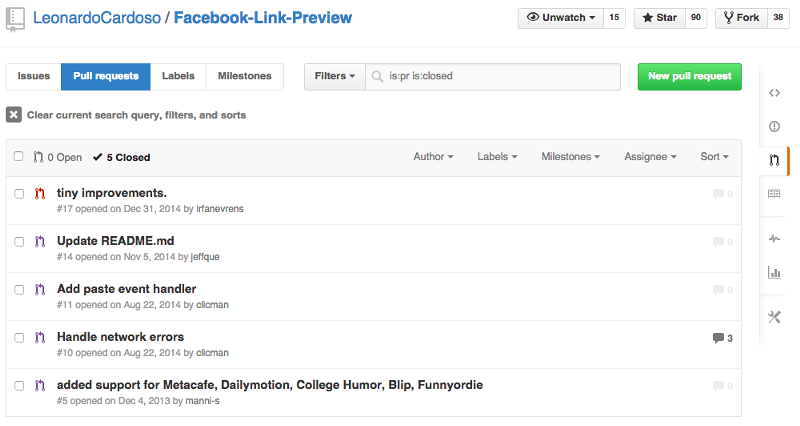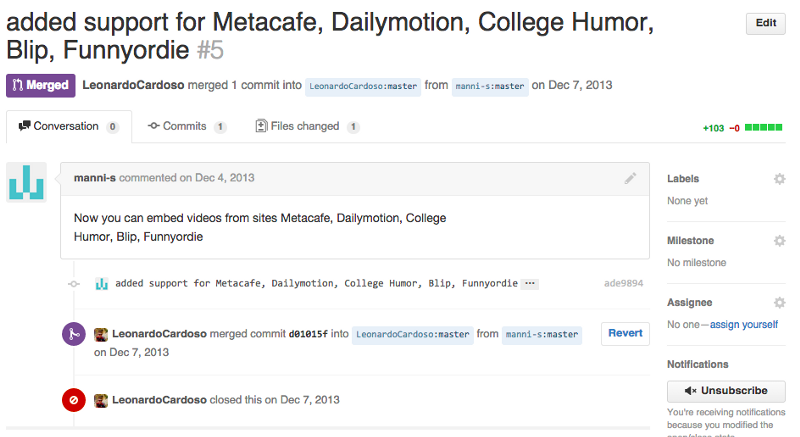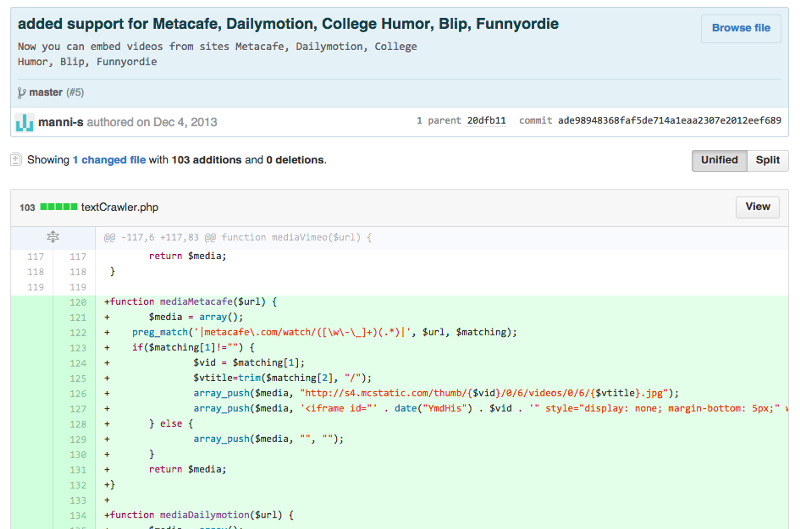Pull Requests: You Better Use Them
Friday, 16 September 2016
Pull requests are a feature that most of repository hosting service provide such GitHub and Bitbucket. It’s a better way of submitting contributions to a project using a distributed version control system such as Git or Mercurial and it’s easier for developers to collaborate.
It is important to highlight that PRs are a workflow feature, and not a feature of the version control system itself. A Pull Request occurs when a developer asks for changes that were committed to an external repository. They are basically a mechanism for a developer to tell team members that they have completed a feature and it’s ready to be merged on other branch. Thus all team members that are notified of a new PR and can inspect1 it and merge it.
PR flow is basically:
- You make changes on your branch and pull it to your respective remote branch;
- Then, on its hosting service there is a link to create a pull request where you choose the repo which is the source of the modifications and the destination;
- The team members review your changes, discuss them, ask for changes, aprove them;
- When everything is fine, the project maintainer merges it;
- PR is closed.
Below there is a real example of one of my repos in GitHub: Facebook Link Preview. Some developers has forked my repo and pull-requested to it.
List of Pull Requests

List of Pull Requests
Pull Request Flow

Pull Request Flow
Pull Request Commits

Pull Request Commits
Here are two links to know more:
